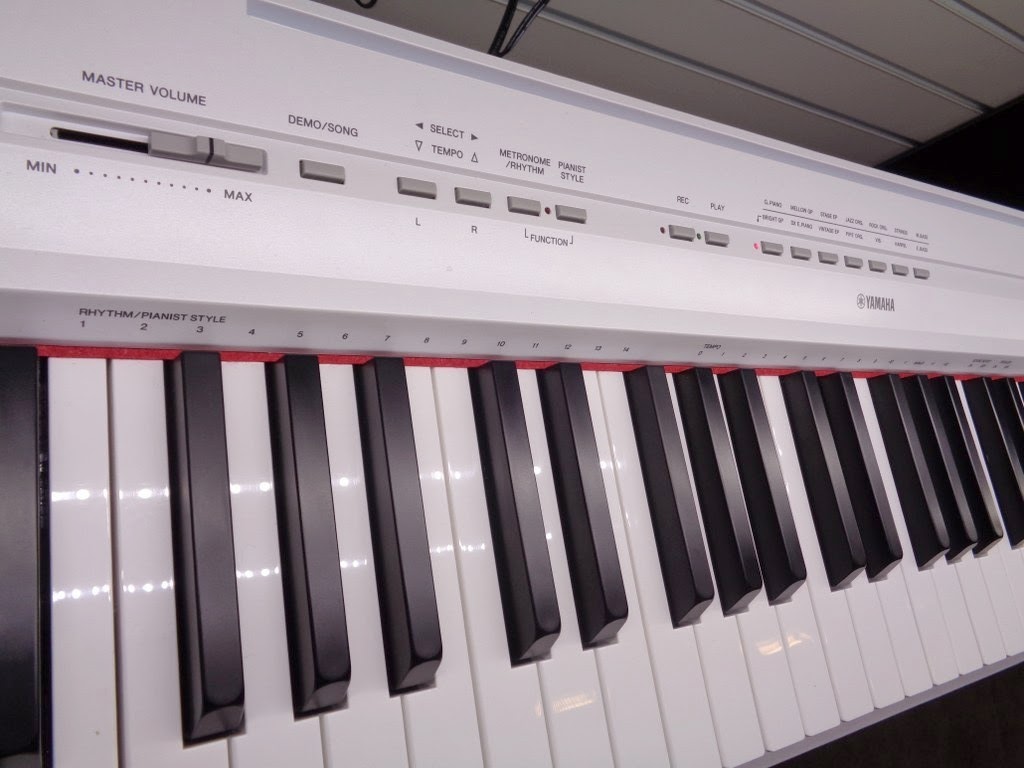Hey there music lovers, have you ever wondered about the grand piano and what makes it stand out from other instruments? If you’re like me, the sight of a grand piano alone is enough to take your breath away. But have you ever stopped to truly understand its beauty and complexity? As someone who has been studying and performing on this instrument for years, I’m excited to share all that I know with you. In this article, we’ll explore everything you need to know about the grand piano – from its history and evolution to how it’s played and why it’s so beloved by musicians worldwide. So if you’re ready for a musical journey, let’s get started!
So, what is a grand piano?
A grand piano is a large, acoustic musical instrument that produces sound through the vibration of strings when struck by hammers. It is considered one of the most prestigious and iconic instruments in the world, known for its rich and full-bodied sound.
The design of a grand piano allows for longer strings and larger soundboards, resulting in a more resonant and powerful tone compared to other types of pianos. Its distinctive shape with a curved lid also helps to project the sound outward, making it ideal for solo performances or concerts.
Grand pianos come in various sizes, ranging from 5 feet to over 9 feet long. The larger the size, the deeper and richer the sound produced. They are typically made from high-quality materials such as solid wood (usually spruce) for the soundboard and sturdy hardwoods like maple or mahogany for the frame.
Playing a grand piano requires skillful technique as well as physical strength due to its heavy keys and action mechanism. This makes it a popular choice among professional musicians who value its expressive capabilities and dynamic range.
In addition to being used in classical music performances, grand pianos have also been featured prominently in jazz, pop, rock, and other genres throughout history. They are not only impressive instruments but also works of art that add elegance and sophistication to any space they occupy.
Overall, a grand piano represents centuries of craftsmanship combined with modern technology to create an exceptional musical experience. Whether you’re playing one or simply listening to its beautiful melodies, this majestic instrument will always hold a special place in our hearts.
Understanding the History and Evolution of the Grand Piano
In the intricate world of music, few instruments command as much respect and admiration as the grand piano. Its polished surface, majestic form, and impressive sound are a testament to centuries of evolution in design and acoustics. The story of the grand piano began in Italy around 1700 with an ingenious instrument maker by the name Bartolomeo Cristofori. He sought to create an instrument that could play both soft (piano) and loud (forte) notes – hence he named his invention ‘pianoforte’. This new musical marvel used hammers striking strings instead of plucking them like its predecessor, the harpsichord.
As time passed, refinements were made to Cristofori’s novel invention. Changes included alterations in size, shape, stringing system & even adding more keys – all aimed at enhancing sound quality & playing capability. By late 18th century Britain had created the first ‘Grand’ pianos; their horizontal wing-shaped design offered better sound projection for larger venues.
- In early 19th century France introduced double escapement action allowing faster key response.
- America brought forth cast-iron frames giving structural support for increased string tension which boosted volume & range.
The continuous innovations transformed these elegant classical instruments into ultra-sophisticated modern marvels we know today. Today’s Grand Pianos are capable of producing a vast array of sounds — from delicate melodies that can barely be heard over a whisper to powerful symphonic crescendos that fill concert halls.
Exploring the Unique Design and Structure of a Grand Piano
The grand piano is truly an architectural marvel in the world of musical instruments, a beautiful blend of opulent aesthetics and intricate engineering. Commanding both presence and respect with its rich, melodious notes encased in an elegant shell, this celebrated instrument has a unique design and structure that sets it apart from all other pianos. Its iconic shape is more than just about looks – the horizontal orientation allows for longer strings which contribute to creating richer sounds while also providing greater control for musicians.
On delving deeper into the mechanics of a grand piano, one would find it as fascinating as its exterior beauty. The interior boasts a highly complex mechanism, made up of around 12,000 individual parts working harmoniously together to produce soulful melodies at each keystroke.
- The soundboard: This resonates every note played on the hammers and strings.
- Hammers & Strings: Hitting the right string connected to specific keys generates corresponding musical notes.
- The frame: A cast-iron frame lends strength while supporting high tension from tight strings.
Every element contributes remarkably towards creating exceptionally balanced acoustics that echo throughout concert halls or intimate settings alike. All these components encapsulated within its graceful curves make each grand piano not only an exquisite piece of craftsmanship but also a testament to luthiers’ timeless ingenuity.
Read also: what is a grand piano
Unraveling the Complex Mechanics Behind How a Grand Piano Works
Unraveling the Complex Mechanics Behind How a Grand Piano Works
In the world of musical instruments, few things are as fascinating as the grand piano. This marvelous creation is not just an object of beauty but also a marvel of mechanical engineering that creates harmonious sounds, captivating hearts and minds for centuries. The mechanics behind how a grand piano works may seem unapproachable and complex because it’s indeed intricate but extremely interesting to explore.
Upon pressing down on one of the keys, an exciting sequence of events unfolds inside this extraordinary instrument. Each key is attached to a wooden lever which lifts a felt-covered hammer. As you release your finger from the key, gravity pulls back both lever and hammer into their original positions due to an ingenious spring mechanism. Through this process, each strike on different keys produces distinctive notes creating enchanting melodies.
But there’s more! Every grand piano has three pedals at its base that play crucial roles in sound variation. These pedals are:
- The Damper Pedal: It sustains notes even after releasing keys.
- The Sostenuto Pedal: It allows selective sustainment of chosen notes.
- The Una Corda Pedal: It softens the tone by shifting hammers sideways so they hit fewer strings.
The grandeur melody emerging from these pianos isn’t accidental but rather results from an array of meticulously arranged parts working seamlessly together under those gleaming black or white surfaces.
 what is a grand piano
what is a grand piano
The Art of Playing a Grand Piano: Techniques and Tips for Mastery
Playing a grand piano can seem like an intimidating feat. But with the right approach and consistent practice, you can learn to master this magnificent instrument. The first step is to understand the keys – all 88 of them! It might look overwhelming at first, but remember that they just repeat in patterns of seven white keys and five black ones. Don’t rush yourself; begin by learning one key at a time, building your knowledge gradually until each one is familiar under your fingertips.
Mastery Techniques:
In developing skills as a pianist:
- Lay emphasis on correct posture – it isn’t merely about looking poised while playing but also for better control over keys.
- Practice scales regularly – they are fundamental in fostering finger dexterity and familiarity with diverse musical keys.
- Ingrain proper fingering habits early – it’s crucial for smooth transitioning between notes.
While practicing these techniques, don’t forget to incorporate expression into your music too because playing the piano is not solely about hitting the right notes but also about conveying emotions through them. Listen deeply to every note you play; try imbuing different feelings — maybe joyful exuberance or pensive melancholy — based on what the piece demands.
Remember that mastering any skill requires dedication and patience. Keep challenging yourself with more complex pieces as you progress — this helps grow your abilities significantly while keeping things engaging.
And most importantly, always remember why you started: because playing grand piano allows unparalleled articulation of beauty using nothing but ten fingers and eighty-eight keys!
You may also like: t118 yamaha piano
Why Musicians Love the Grand Piano: Exploring its Tonality, Versatility, and Emotional Depth
The grand piano, that magnificently large instrument with an enchanting sound and captivating allure is a musician’s dream. Revered for its rich tonality, the grand piano showcases a wide range of tones from deep, resounding bass notes to delicate, high trebles. The quality of sound it produces is simply unmatched; every note resonating with well-rounded fullness and depth. Its unique acoustic design allows vibrations to expand freely in all directions providing an audio experience filled with warmth and dynamism.
In terms of versatility, this majestic musical marvel offers endless possibilities.
Musicians love playing around its 88 keys producing tones that can convey any emotion; joyfulness or gloominess on demand! This instrument becomes their voice – expressing feelings words cannot. Again,the grand piano stands unfazed by genre restrictions as it fits perfectly into jazz blues just as effortlessly as it does in classical melodies.
- A master at capturing dramatic expressions.
- An intuitive partner during improvisations.
- A reliable companion when crafting melancholic ballads.
Its emotional depth is another attribute musicians find irresistible about the grand piano. It creates music that stirs the soul; makes one dance or brings tears – exemplifying the power of sound over human emotions. Beethoven wasn’t wrong when he said “Music should strike fire from the heart of man”, indeed, true for anyone seated before a Grand Piano navigating through its black & white landscape.
This beloved instrument has thus earned itself not just a place in concert halls but also within our hearts due to its perfect blend of tonality, versatility and emotional connect.
Conclusion: The Enduring Appeal of the Majestic Grand Piano
The grand piano, with its breathtaking size and mesmerizing sound, continues to captivate audiences worldwide. Stepping into a room adorned by this majestic instrument instantly creates an environment brimming with elegance and sophistication; you can almost hear the soft strains of Beethoven’s Moonlight Sonata or Mozart’s Rondo Alla Turca in the air. This timeless masterpiece of craftmanship is not just a visually arresting piece of furniture—it’s also a symbol of musical excellence that exudes prestige and luxury.
From Carnegie Hall to intimate home studios, grand pianos are deeply embedded in our cultural fabric. Let’s delve into the reasons for their enduring appeal:
- Aesthetic Appeal: Their curvature design combined with glossy finishes make these instruments architecturally beautiful.
- Richer Sound Quality: Grand pianos are known for their superior acoustics due to larger soundboards and longer strings.
- Precision Control: The horizontal string alignment provides more precision control over your music creation.
Whether it’s resounding through concert halls under the agile fingers of virtuosic performers or serving as an elegant centerpiece in someone’s living room -the grand piano commands attention. Its harmonious blend of artistry, craftsmanship, heritage forms an irresistible allure that only grows stronger as time unfolds. They might be grand by name but even grander by nature; indeed, there’s something truly sublime about a well-crafted grand piano – it resonates with our deepest appreciation for beauty and melody.

